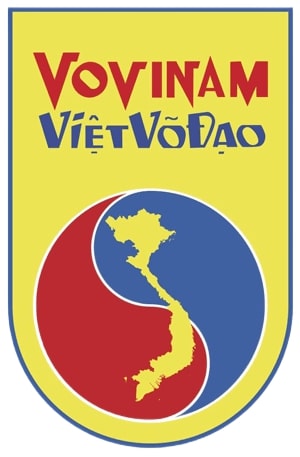|
Akanksha Sahai
Akanksha Sahai (born 28 October 1988) is an Indian athlete that is chosen to compete in the 2009 Asian Indoor Games and the first World Vovinam Championship. In the dual sword form event of the Indoor Games, Pratiksha Santosh Shinde and Akanksha Sahai got India a silver medal. It's also Pratiksha's third silver coming in fights category. In the World Vovinam Championship, she is ranked number 3. Early life Akanksha is a student at University of Delhi, who majors in Commerce and a Masters from Lancaster University in International Business. Together with her father, Vishnu Sahai, who is a doctor and a peer, she makes vovinam popular in the whole India India, officially the Republic of India (Hindi: ), is a country in South Asia. It is the seventh-largest country by area, the second-most populous country, and the most populous democracy in the world. Bounded by the Indian Ocean on the so .... She helps him a lot to communicate with people, organise and acts as an at ... [...More Info...] [...Related Items...] OR: [Wikipedia] [Google] [Baidu] |
Pratiksha Santosh Shinde
Pratiksha Santosh Shinde (born May 2, 1994, Pune) is an Indian athlete that is chosen to compete in the 2009 Asian Indoor Games and the first World Vovinam Championship. In the dual sword form event of the Indoor Games, Shinde and Akanksha Sahai got India a silver medal. It's also Shinde's third silver coming in fights category. She also participated in the 4th World Traditional Wushu Championship in China Shiyan city 2010. In the World Vovinam Championship, she is ranked number 3. External links Official site at Ho Chi Minh City 1994 births Living people {{India-martialart-bio-stub ... [...More Info...] [...Related Items...] OR: [Wikipedia] [Google] [Baidu] |
Vovinam
Vovinam (short for ''Võ Việt Nam''; literally meaning Vietnamese Martial Arts, or vi, Việt Võ Đạo (越武道), meaning Vietnamese Way of Martial Arts) is a Vietnamese martial art, It was founded in 1938 by Nguyễn Lộc. It is based on traditional Vietnamese subjects and eclectic sources. Vovinam involves the use of the hands, elbows, legs, knees and weapons such as swords, knives, chisels, claws, fans. Students also learn how to deal with hand-held weapons, counter-attacks, lock-ups, and levers. Amongst Vietnamese martial arts, Vovinam is the largest and most developed in Vietnam with more than 60 schools around the world, including Poland, Belgium, Canada, Cambodia, Denmark, Germany, the United States, Morocco, Norway, Russia, France, Romania, Switzerland, Sweden, Singapore, Uzbekistan, Thailand, Italy, Australia, India, Pakistan, Iran, Spain, Algeria, Taiwan, Greece. The Chief of Vovinam Council now is Nguyễn Văn Chiếu. Vovinam is practiced with and witho ... [...More Info...] [...Related Items...] OR: [Wikipedia] [Google] [Baidu] |
World Vovinam Championship
In its most general sense, the term "world" refers to the totality of entities, to the whole of reality or to everything that is. The nature of the world has been conceptualized differently in different fields. Some conceptions see the world as unique while others talk of a "plurality of worlds". Some treat the world as one simple object while others analyze the world as a complex made up of many parts. In ''scientific cosmology'' the world or universe is commonly defined as " e totality of all space and time; all that is, has been, and will be". '' Theories of modality'', on the other hand, talk of possible worlds as complete and consistent ways how things could have been. ''Phenomenology'', starting from the horizon of co-given objects present in the periphery of every experience, defines the world as the biggest horizon or the "horizon of all horizons". In ''philosophy of mind'', the world is commonly contrasted with the mind as that which is represented by the mind. ''Th ... [...More Info...] [...Related Items...] OR: [Wikipedia] [Google] [Baidu] |
2009 World Vovinam Championship
9 (nine) is the natural number following and preceding . Evolution of the Arabic digit In the beginning, various Indians wrote a digit 9 similar in shape to the modern closing question mark without the bottom dot. The Kshatrapa, Andhra and Gupta started curving the bottom vertical line coming up with a -look-alike. The Nagari continued the bottom stroke to make a circle and enclose the 3-look-alike, in much the same way that the sign @ encircles a lowercase ''a''. As time went on, the enclosing circle became bigger and its line continued beyond the circle downwards, as the 3-look-alike became smaller. Soon, all that was left of the 3-look-alike was a squiggle. The Arabs simply connected that squiggle to the downward stroke at the middle and subsequent European change was purely cosmetic. While the shape of the glyph for the digit 9 has an ascender in most modern typefaces, in typefaces with text figures the character usually has a descender, as, for example, in . The mo ... [...More Info...] [...Related Items...] OR: [Wikipedia] [Google] [Baidu] |


